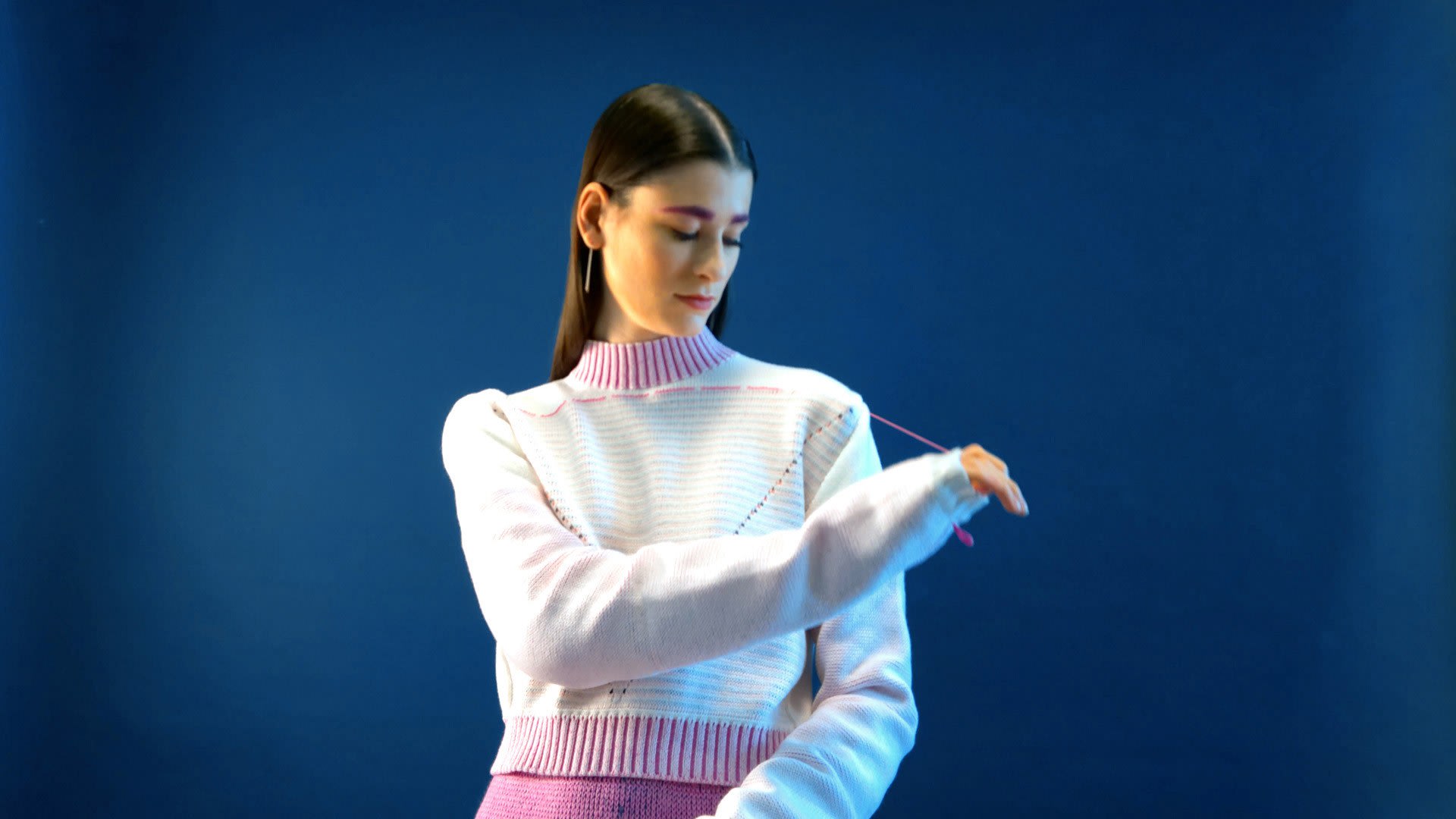Rosalba Fucci is an award-winning RCA MA Textiles graduate specialised in knitwear design and currently based in Milan, Italy. After completing a Fashion BA at Politecnico di Milano, where she developed her graduation project in collaboration with Loro Piana, she gained valuable professional experience in the Italian fashion industry.
Rosalba is a conceptual technical thinker: she likes to challenge the technical aspects of knitting to create innovative and refined wearable pieces. In each project she focuses on a specific structure and its properties, discovering unexpected applications and using them as opportunities for conceptual development. Combining strong theoretical research with advanced fabric experimentation she strives to achieve smart and imaginative results.
Awards:
Loro Piana Knit Game 2017
Frankfurtstyleaward 2017 (3rd place)
Masters Dissertation Awarded with Distinction “Decolonising Sustainable Fashion - Questioning sustainable fashion through the study of its aesthetic ” (2020)
Worshipful Company of Framework Knitters Award 2020
Shima Seiki Student Competition 2021


![[untitled]](https://res.cloudinary.com/rca2020/image/upload/f_auto,h_1280,w_1920,c_fill,g_auto,q_auto/v1/rca2021/60c34dbba98c7847e5e133ea-981005?_a=AXAH4S10)



![[untitled]](https://res.cloudinary.com/rca2020/image/upload/f_auto,h_1089,w_1920,c_fill,g_auto,q_auto/v1/rca2021/60c351b3a98c7847e5e21700-665053?_a=AXAH4S10)

![[untitled]](https://res.cloudinary.com/rca2020/image/upload/f_auto,h_1440,w_1920,c_fill,g_auto,q_auto/v1/rca2021/60c351b3a98c7847e5e21700-942737?_a=AXAH4S10)
